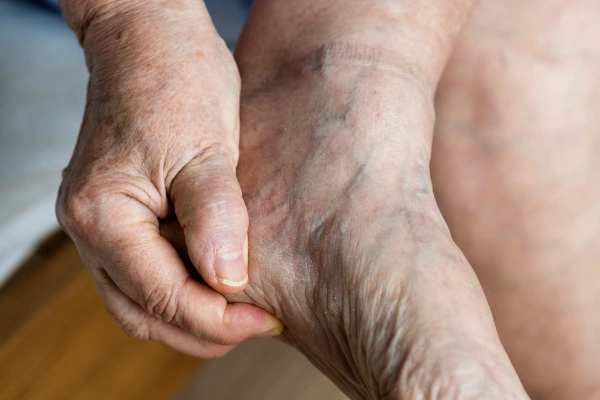Foot Problems:
Foot and Ankle Injuries
Foot and Ankle Injuries
Your feet and ankles form the foundation of your entire body—and with 26 bones and 33 joints per foot, they are especially vulnerable to injury. At Podiatry International Barbados, we specialize in diagnosing and treating a wide range of foot and ankle injuries, from minor sprains to complex fractures. Prompt care helps restore movement, reduce long-term complications, and prevent future issues.
Types of Foot Fractures
Stress Fractures
Stress fractures are tiny cracks in the bone surface and often occur in the forefoot (from toes to midfoot). These injuries typically result from:
- Repetitive impact (e.g. running or jumping)
- Sudden increase in training volume or intensity
- Changes in terrain or footwear
General Bone Fractures
These fractures often result from direct trauma or twisting injuries. They may be:
- Stable fractures: bones remain aligned
- Displaced fractures: bone ends are misaligned
- Closed fractures: the skin remains intact
- Open fractures: the bone breaks through the skin
Common symptoms include pain, swelling, bruising, and difficulty bearing weight. All suspected fractures should be evaluated by a medical professional to rule out complications.
Ankle Sprains
Ankle sprains are among the most common sports and activity-related injuries. They occur when ligaments are overstretched or torn due to twisting or rolling the ankle, often while walking on uneven surfaces, falling, or pivoting during sports.
Symptoms:
- Pain after twisting the ankle
- Swelling and tenderness
- Bruising and joint instability
While mild sprains may resolve with conservative care, untreated or severe sprains can lead to chronic ankle instability and increase the risk of future injuries.
What You Can Do (R.I.C.E. Method)
- Rest: Minimize activity and stay off the injured foot or ankle
- Ice: Apply a cold compress (10 minutes on, 20 minutes off) to reduce swelling
- Compression: Lightly wrap the area with an elastic bandage—don’t over-tighten
- Elevation: Keep the foot elevated above heart level to manage swelling
What Your Podiatrist at Podiatry International Can Do
- Perform a comprehensive physical exam
- Order and review diagnostic imaging (X-rays, bone scans, CTs, MRIs)
- Immobilize the foot or ankle with a cast, boot, or brace if needed
- Prescribe anti-inflammatory or pain-relief medications
- Perform bone realignment or surgery for complex cases
- Recommend physiotherapy to aid recovery and restore strength
- Prescribe custom orthotics to prevent recurrence and provide long-term support
Book an Appointment Today
Your feet deserve the best care. Schedule your podiatrist visit now and start your journey to healthier, pain-free feet. Located in Barbados.


